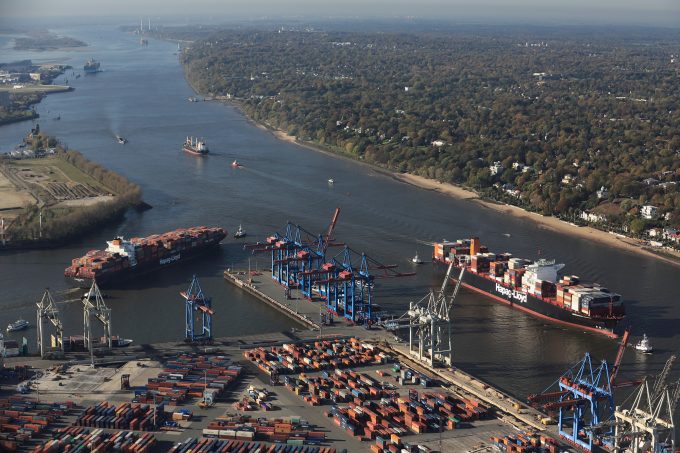CMA CGM and Hamburg port expansion – running out of time?
Does this make sense?
TFII: SOLID AS USUALMAERSK: WEAKENINGF: FALLING OFF A CLIFFAAPL: 'BOTTLENECK IN MAINLAND CHINA'AAPL: CHINA TRENDSDHL: GROWTH CAPEXR: ANOTHER SOLID DELIVERYMFT: HERE COMES THE FALLDSV: LOOK AT SCHENKER PERFORMANCEUPS: A WAVE OF DOWNGRADES DSV: BARGAIN BINKNX: EARNINGS OUTODFL: RISING AND FALLING AND THEN RISING
TFII: SOLID AS USUALMAERSK: WEAKENINGF: FALLING OFF A CLIFFAAPL: 'BOTTLENECK IN MAINLAND CHINA'AAPL: CHINA TRENDSDHL: GROWTH CAPEXR: ANOTHER SOLID DELIVERYMFT: HERE COMES THE FALLDSV: LOOK AT SCHENKER PERFORMANCEUPS: A WAVE OF DOWNGRADES DSV: BARGAIN BINKNX: EARNINGS OUTODFL: RISING AND FALLING AND THEN RISING

Despite the war in Ukraine and industrial action at its container terminals in June, the port of Hamburg bucked the trend of North European hubs by growing its volumes over the first half of the year.
Throughput edged up year on year by 0.9%, to 4.4m teu, which compares with the 4.4% fall at Antwerp-Bruges, to 6.8m teu, and 6.2% drop at Rotterdam, to 7.3m teu.
A year-on-year 5.8% increase in Chinese imports and exports, to 1.3m teu, and a 3.9% rise in US volumes, to 291,000 teu, at Hamburg mitigated the impact of EU sanctions on Russian trade and a post-Brexit 20% decline in UK volumes.
Moreover, the completion of the adjustment of the navigation channel in the river Elbe in January boosted vessel utilisation levels of ultra-large container vessels (ULCVs)
The deepening of the river and provision of a passing box for ships entering or leaving the port enabled the 117 ULCVs that called during the period to handle 8% more containers, as the average draught of the ships was able to increase by 0.5 metres.
But Axel Mattern CEO of Port of Hamburg Marketing, admitted that the port faced “many challenges”, not least the still unresolved wage dispute between the ver.di trade union and the Central Association of German Seaport Companies (ZDS).
After two 24-hour and one 48-hour strikes in support of a pay increase in excess of inflation, a Hamburg court imposed a cooling down period during which no further industrial action could take place. This ends on Friday, and there has been no official word on renewed talks taking place.
In the interim, carriers complain about the absence of volunteer gangs for weekend shifts and labour shortages at Hamburg’s main container terminals.
With some 53% of the Hamburg modal split going by rail, around 210 freight trains and 5,500 railcars use the port railway’s 300km network daily, but recently high yard density has obliged rail operators to temporarily suspend services.
“In recent weeks, various factors, among these the high number of overdue ships, disrupted rail clearance,” said Mr Mattern.
But if the problems on the rail network could be overcome, Hamburg stands to benefit from an increase in imports, as shippers divert cargo from the Benelux ports due to water level restrictions for barge traffic on the Rhine.
Mr Mattern said the relentless disruption to vessel schedules, likely to be exacerbated by the eight-day strike at Felixstowe Port, resulted in “extraordinary peak loads” at container terminals. He said “containers not collected punctually, blocking urgently-needed handling space”, were a knock-on impact of the bunching of vessels, as terminal efficiency declined.
In terms of the outlook, Mr Mattern suggested the second half of the year could see a softening of Hamburg’s throughput numbers, particularly in the latter months. Indeed, ocean carriers that reported huge profits at the H1 stage have all expressed concern about the demand outlook for Q4 and beyond.
“Against the background of a deteriorating economic situation, likely to be characterised by an expected rise in energy prices and a weakening in consumption, development of seaborne cargo handling is more likely to weaken by the year-end,” he said.
Comment on this article